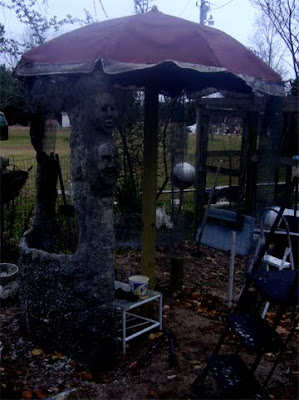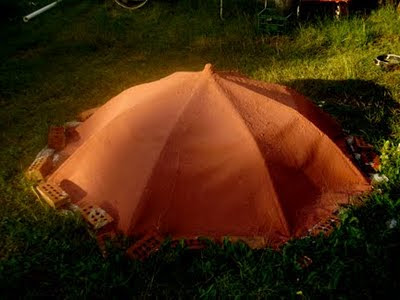Gazebo 5

I finally had the opportunity to work on the gazebo. Inclement weather, early sundowns, and other projects always seem to get the way of adding more papercrete to the structure. The other projects include renovating a 40 year old mobile home (I'm replacing the windows first (two down, ten to go), building a papercrete "sprayer" for use with an air compressor, and, of course, working on polymer sculptures. I'm hoping to post photographs of the mobile home (and new sculptures) as we progress. The trailer has been on our property awhile, and we were going to give it to the in laws to use for storage. But the county will not give us a permit to move a mobile home build prior to 1985 unless it's going to the land fill. Nor will they give a contractor a permit to rewire the thing. We felt it was just too valuable a space to pay someone to haul it to the dump, so we're taking it "off grid" and turning it into a studio. I'm hoping to cover the entire be...





